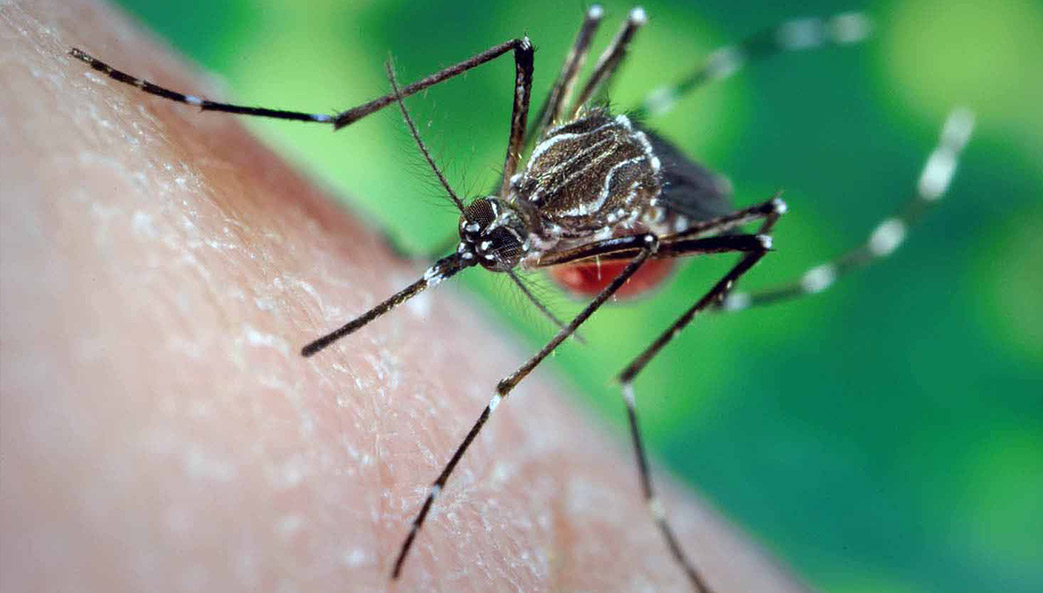A horse in Lowndes County, Georgia has tested positive for Eastern equine encephalitis (EEE), one of the most pathogenic among all of the mosquito-borne, encephalitis-causing viruses.
The clinical disease has a human-case fatality rate of more than 50 percent and a 90 to 95 percent fatality rate in horses. The type and severity of illness in humans depend upon the age and health of the individual.
EEE, the most severe mosquito-borne disease of humans in the U.S., is caused by a virus transmitted by mosquitoes that typically develops in the swamps and woodlands below the fall line in Georgia. Health districts have reported an increased number of animal cases, indicating that the virus is actively being transmitted.
Thankfully, cases are rare in humans. There was one human case in 2012, and a total of 29 have been reported in the U.S. since 1964. Symptoms range from a mild, flu-like illness to brain swelling, coma and possibly death. Symptomatic cases have a fatality rate of 30 to 50 percent.
EEE can infect people of any age, but young children and infants are particularly vulnerable. Children, the elderly, immunocompromised individuals and, sometimes, apparently healthy adults can develop acute encephalitis with high fever, drowsiness, lethargy, vomiting, convulsions and coma.
The case-fatality rate is especially high in children. Individuals who survive infection are often left with conditions including mental deficits, behavioral changes, convulsive disorders and/or paralysis.
The Centers for Disease Control and Prevention (CDC) reports a yearly average of seven human cases of EEE in the U.S. Most cases of EEE have been reported from Florida, Massachusetts, New York and North Carolina.
Last year’s rains, coupled with rainfall to date this year, will keep the swamps and low-lying areas wet for the foreseeable future. Consequently, most of south Georgia is at risk.
There are still aspects of the EEE disease cycle that are unclear. The current understanding is that the virus cycles among birds and bird-feeding mosquitoes (primarily Culiseta melanura) in swamp areas below the fall line in Georgia.
Bridge vectors (other mosquitoes that feed on both infected birds and horses or people) move the virus out of the bird/mosquito cycle. According to the American Mosquito Control Association, recent research indicates that snakes and even flatworms could serve as overwintering reservoirs for this virus. Research on EEE disease vectors is currently ongoing in Florida.
While EEE is a larger threat below Georgia’s fall line, cases can occur farther north in the state but are rare. University of Georgia Cooperative Extension experts expect mosquito populations to be high this spring.
Take precautions by following these tips from UGA Extension:
- Eliminate all containers and standing water but recognize that there are going to be large numbers of “natural” habitats this spring.
- Wear light-colored, loose-fitting clothing to make you less attractive to mosquitoes.
- Wear pants and long sleeves to reduce the amount of exposed skin. Newer, breathable fabrics make this a little more tolerable in Georgia weather.
- Use EPA-approved repellents with active ingredients DEET, picaridin, IR3535 and lemon eucalyptus oil, which are proven to be safe and effective. DEET, picaridin and IR3535 are approved for use on children 2 months and older. Adults should apply the repellent to their hands and rub the exposed skin of children. Complete coverage with repellents is important for everyone. Wash treated skin with warm, soapy water when you are not exposed to mosquitoes.






